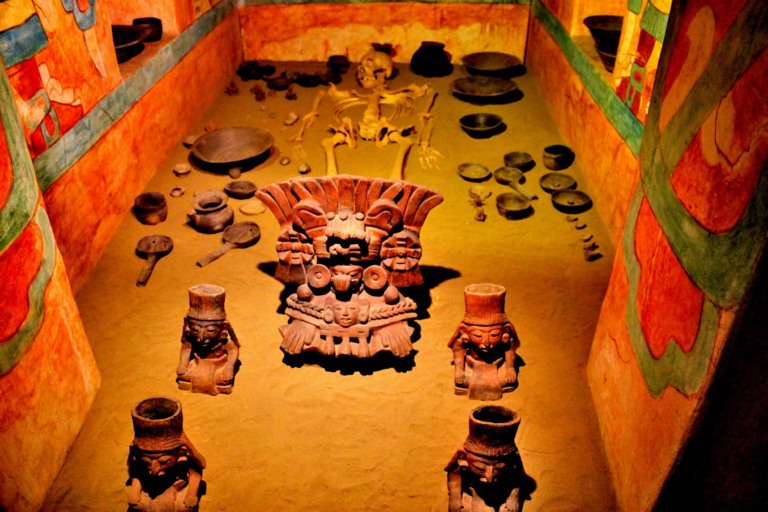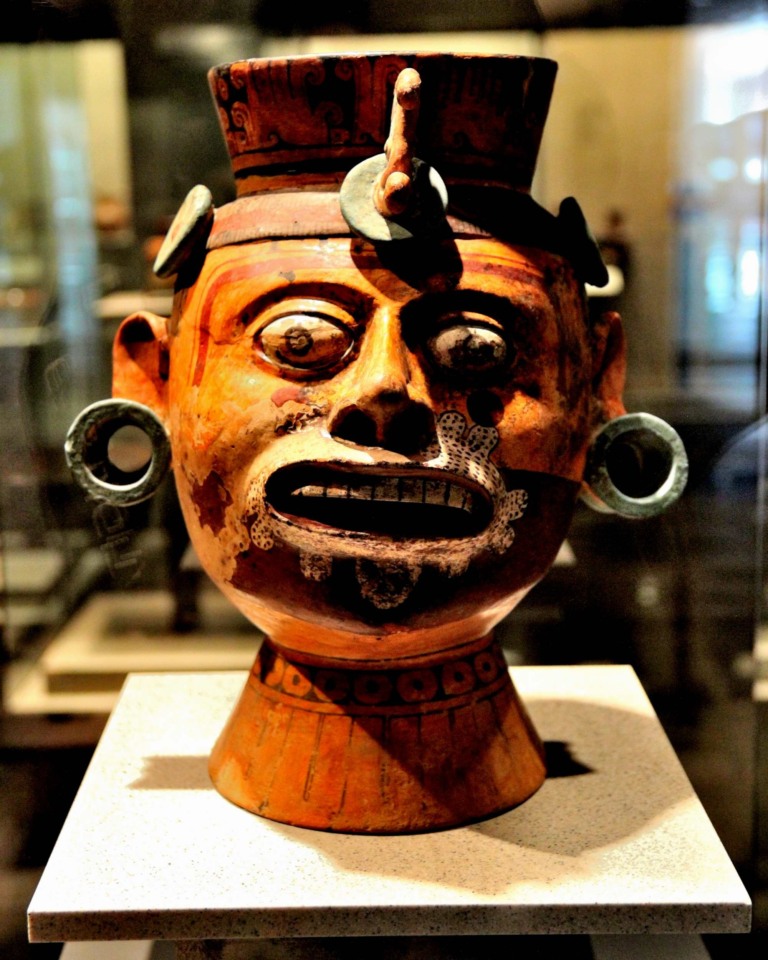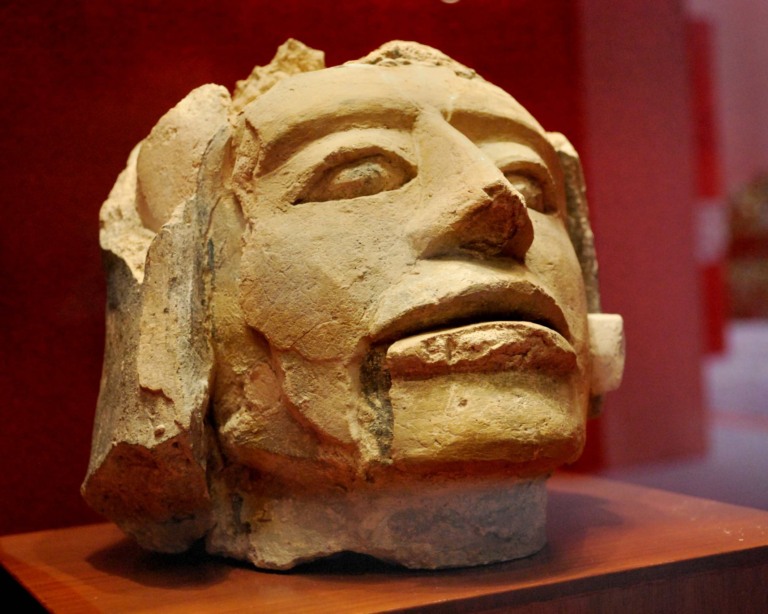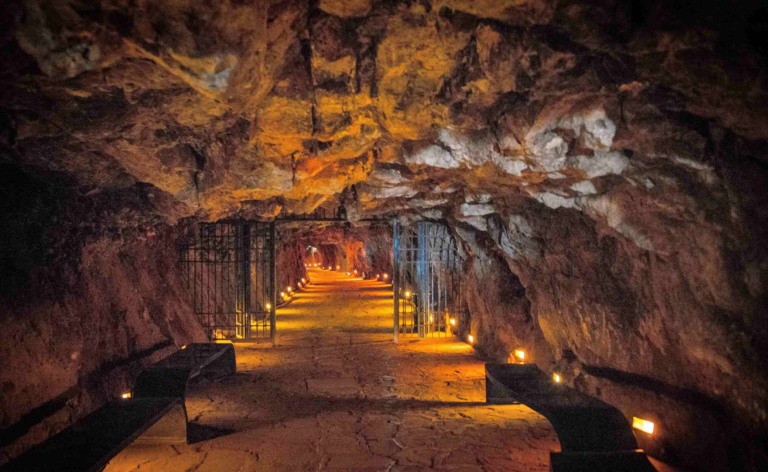The Pre-Hispanic City of Teotihuacan, nestled in a sub-valley of the Valley of Mexico, specifically in the State of Mexico, is a captivating testament to ancient Mesoamerican civilization. This remarkable site was recognized as a UNESCO World Heritage Site in 1987. Its history stretches back to around 400 B.C., and it rose to become the region’s most influential city by 400 A.D. Here are some historical facts about Teotihuacan:
Teotihuacan History
1. History and Culture: Despite its significance, the enigmatic origins, history, and culture of Teotihuacan continue to baffle historians. Notably, when the Aztecs encountered the city in the 1400s, they named it Teotihuacan, signifying “the place where the gods were created.” By this time, however, the city had been abandoned for many centuries.
2. Architecture: Teotihuacan’s architectural layout adheres to a meticulously designed grid covering approximately 8 square miles (20 square kilometers). It comprises over 2,000 single-story apartment compounds and features a diverse array of pyramids, plazas, temples, and noble and priestly residences.
3. Miccaotli in Nahuatl: The central artery, known as the Avenue of the Dead or Miccaotli in Nahuatl, the Aztec language, connects the city’s primary structures. This road, measuring 130 feet (40 meters) wide and extending 1.5 miles (2.4 kilometers) in length, is intriguingly oriented slightly eastward, about 15.5 degrees from true north, leading directly to the nearby sacred peak of Cerro Gordo, an extinct volcano.
4. Teotihuacan Pyramids: Among the prominent structures in Teotihuacan are the Pyramid of the Moon, the Pyramid of the Sun, the Ciudadela (“Citadel”), and the Temple of Quetzalcoatl, also known as the Feathered Serpent. Recent archaeological excavations at the Pyramid of the Moon have unveiled a striking sacrificial burial bearing distinctive artwork that sets it apart in Mesoamerica. These discoveries emphasize the city’s focus on military activities and rituals to celebrate and exercise state power during its zenith.
5. Pre-Hispanic City: Teotihuacan is a unique witness to the pre-urban landscapes of ancient Mexico. The valley of Teotihuacan has seen human habitation since before the Christian era. However, between the 1st and 7th centuries A.D., it evolved into one of the largest ancient cities in the Americas, home to around 25,000 residents. The city’s urban layout harmoniously incorporated natural elements of the Teotihuacan Valley, notably the San Juan River, whose course was modified to intersect the Avenue of the Dead.
6. Temple of Quetzalcoatl: This axis, running north to south, showcased monumental structures and complexes, with the Pyramids of the Sun and the Moon, as well as the Great Compound featuring the Temple of Quetzalcoatl, standing as prominent landmarks. The architectural style of “talud-tablero” is a hallmark of Teotihuacan, often adorned with wall paintings capturing the cosmology and environment of that era.
Teotihuacan stands as a paradigm of urbanization and large-scale planning, profoundly influencing the concepts of contemporary and subsequent civilizations. In its heyday, the city extended over 36 square kilometers, with expansive areas outside the ceremonial center housing palaces and residential quarters of great historical value.
Regrettably, the city met its demise by fire and was ultimately abandoned during the 7th century, leaving behind captivating mysteries and a testament to its remarkable cultural and architectural achievements.
Teotihuacan Facts
Teotihuacan is an ancient Mesoamerican city located in the Valley of Mexico, near what is now Mexico City. Here are some other facts about Teotihuacan:
7. Early Establishment: Teotihuacan was founded around 100 BCE and reached its zenith between the 1st and 7th centuries CE. It was one of the largest cities in the world at the time.
8. City Layout: The city was carefully planned and featured a grid-like layout with well-defined streets, avenues, and numerous impressive architectural structures. The main axis of the city is aligned with the rise of the Pleiades.
9. Pyramid of the Sun: One of the most iconic structures in Teotihuacan is the Pyramid of the Sun. It’s one of the largest pyramids in the world and is situated along the Avenue of the Dead.
10. Pyramid of the Moon: Another significant pyramid is the Pyramid of the Moon, located at the northern end of the Avenue of the Dead. It’s slightly smaller than the Pyramid of the Sun but still a major focal point of the city.
11. Avenue of the Dead: This is the main road that runs through the center of the city, lined with various important structures and plazas.
12. Multi-Ethnic Population: Teotihuacan was a multi-ethnic city, with people from different Mesoamerican cultures living there. It is believed to have housed a population of around 100,000 to 200,000 people at its peak.
13. Mural Paintings: The city is famous for its remarkable mural paintings, many of which have been found in the apartment compounds of the city. These murals provide insights into the city’s culture, society, and religious beliefs.
14. No Written Language: Despite its advanced civilization, Teotihuacan did not have a fully developed system of writing. Much of what we know about the city is derived from its art, architecture, and inscriptions created by neighboring cultures.
15. Decline and Abandonment: Teotihuacan began to decline in the 7th century CE. The reasons for its decline are not fully understood and remain a subject of debate among archaeologists. It was gradually abandoned, and the city was in ruins when the Aztecs discovered it around the 14th century.
16. UNESCO World Heritage Site: Today, Teotihuacan is a UNESCO World Heritage Site and a popular archaeological and tourist destination. It is recognized for its historical and cultural significance in the pre-Columbian history of Mesoamerica.
17. Religious Significance: The city was of great religious importance and was considered a place of pilgrimage and worship by many Mesoamerican cultures, including the Aztecs, long after it was abandoned.
18. Astronomical Alignment: Many of Teotihuacan’s structures have astronomical alignments, showing the significance of celestial bodies in their religion and architecture.
Teotihuacan remains one of the most intriguing archaeological sites in the Americas, offering valuable insights into the culture and civilization of ancient Mesoamerica.








